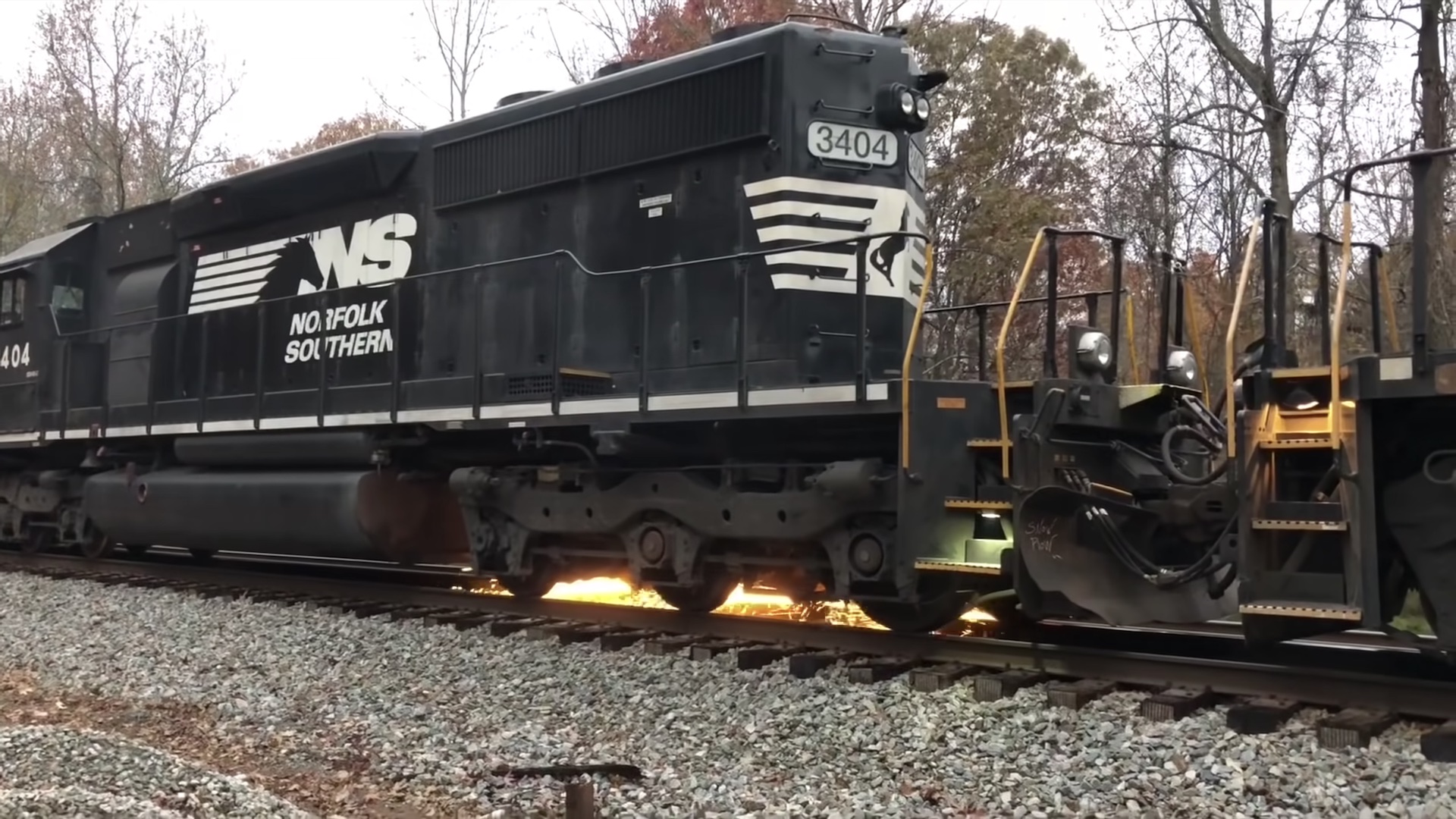

We think of burnouts as largely being the domain of cars, but just about anything with more power than traction can pull one off. Like, for example, trains. But rather than being a way to have an obnoxiously good time, a train spinning its wheels is an indication that someone is about to spend a lot of money on repairs.
Breaking traction with a train is relatively easy, owing to the size of the contact patch at each wheel. While your average compact car has a contact patch measuring approximately 25 square inches for all four wheels according to Tire Rack, a single train wheel has a contact patch that’s “typically the size of a small coin” according to a 2009 study. Seeing as a quarter comes in at less than 0.72 square inches, that gives the likes of even large mainline locomotives like an EMD SD70ACe a contact patch of less than 8.6 square inches. That’s barely a third as much as a compact car, and it has to cope with up to 4,500 horsepower—never mind the thousands of tons of freight potentially in tow.
It’s no wonder, then, that trains have struggled for traction since time immemorial, especially in low-grip conditions such as rain or snow. But bad weather is far from the only scenario that can cause wheel slip: They can break traction when starting on a hill, or even while moving at speed like the fantastically powerful Pennsylvania Railroad T1. Wheel spin doesn’t just mean power’s not going to the ground, either. It also means the wheels and rails are wearing on each other, to potentially disastrous effect. Trains can (and sometimes do) machine their way down into the rail, causing rail burn that can cause a derailment.
Railroads have accordingly come up with a variety of ways to control wheel spin, the oldest of which is the sander; a device that drops sand in front of the drive wheels. They were improved upon with pressurized steam sanders, which blasted grit directly into the gap between rail and wheel, and in the 20th century by software, which we know in the automotive world as traction control. Today, some lines have even added high-powered lasers to their traction tricks, with the Long Island Rail Road using them to zap wet leaves on the tracks. That’s mainly to reduce the risk of locking the brakes (and flat-spotting the wheels), though clean rails have accelerative benefits too.

This isn’t to say that it’s not neat to see a locomotive doing its best impression of the “Back to the Future” Delorean, but it’s a spectacle that can come at a huge cost. The same goes for regular burnouts too, but only if you’re too dumb to have a license to begin with.
Got a tip or question for the author? You can reach them here: james@thedrive.com